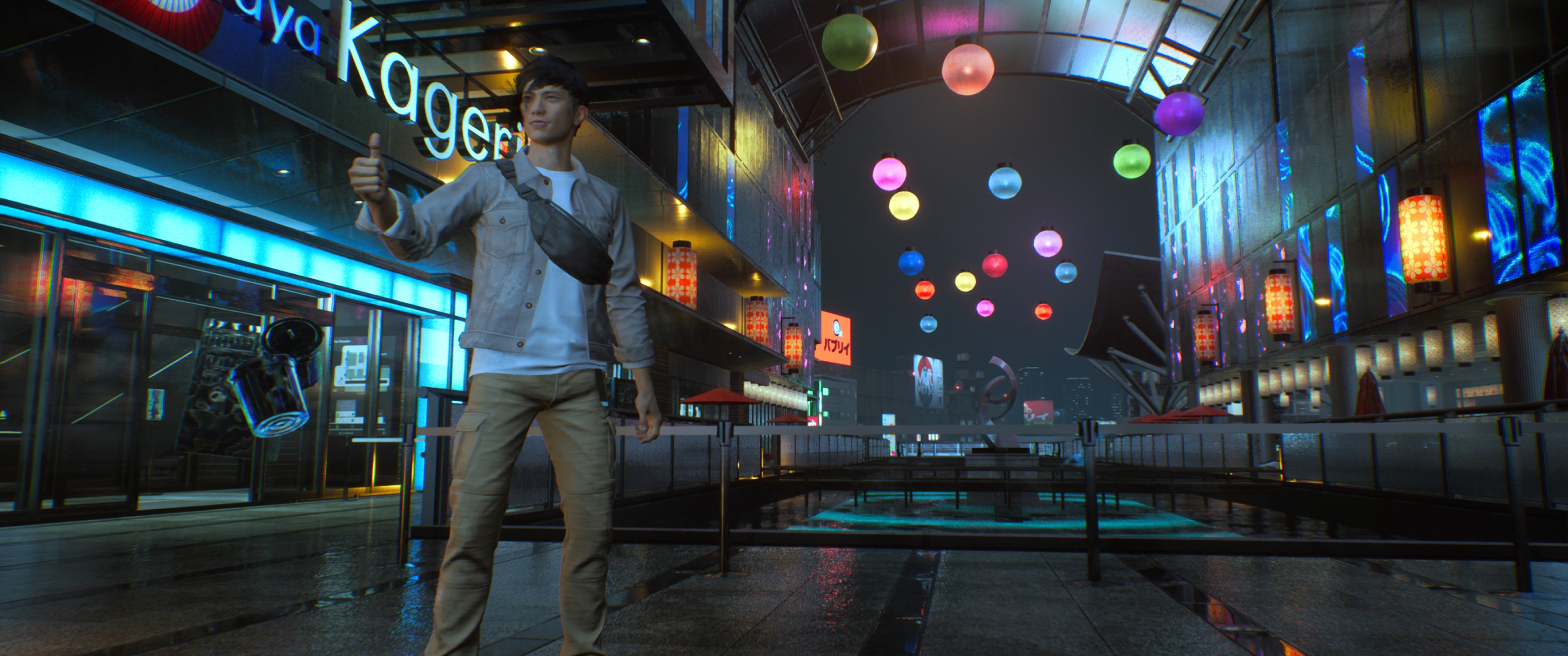Laptop Mag Verdict
Ghostwire: Tokyo’s stunning rendition of Shibuya offers a great excuse to experience this gorgeous corner of Japan and stylishly purge a series of fascinating yōkai. And although its open-world is structurally derivative, Tango Gameworks’ impressive attention to detail ensures this city is always worth exploring.
Pros
- +
Shibuya is wonderfully realized
- +
Stylish Kuji-kiri gestures
- +
Tight combat encounters
- +
Inspired enemy designs
- +
Creative interactivity
Cons
- -
Checklist open-world
- -
Limited exploration
- -
Detached leveling system
- -
Inconsistent side-quests
- -
Narrative isn’t memorable
Why you can trust Laptop Mag
Ghostwire: Tokyo is an open-world action game where players utilize Kuji-kiri hand gestures to manipulate fire, water and wind against yōkai wandering the barren streets of Shibuya. The hectic nature of enemy attacks keeps the action engaging, while a series of novel yōkai types inspired by Japanese mythos elevates the suspense. Shibuya is breathtaking, and even when exploration is arbitrarily limited, Tango Gameworks’ attention to detail is sensational. Exploring Tokyo is a dream come true; every corner of this city is distinct and the frequent bending of reality ensures that no moment is dull on the eyes.
Unfortunately, the open-world's foundation results in players running from one map marker to the next as if they’re marking off a series of chores in a checklist. Rather than getting thrown into this iconic city and removed from the shackles of a linear main campaign, the torii gate system prohibits aimless exploration until endgame.
However, just for its presentation alone, it’s one of the best PS5 games and best PC games out there.
Hunting Hannya
Ghostwire: Tokyo’s narrative begins after a dense fog washes over Shibuya and causes the disappearance of over 200,000 civilians. We follow KK, a spirit detective, inhabiting the body of Akito, a civilian with cryptic ties to the spirit world, in a quest to undo the work of a mysterious specter responsible for the aforementioned phenomenon. Akito is on a quest to find his sister, Mari, who inadvertently gets involved with the situation and becomes a target of the villain, Hannya.

The script fails to present a substantial hook throughout most of its story as KK and Akito don’t have a personality outside of their goals. KK is a typical, hard-boiled detective seeking to save the world from Hannya, while Akito is just a regular guy who wants to get his sister back. Not until the very end of the game does it feel like the narrative starts to come together; as this is when the game provides a backdrop for the relationship between Akito and Mari.
The game’s most intriguing narrative moments are brought out in the final chapter, which means the player will spend a considerable amount of time uncertain about the stakes. Why should we care about KK’s relationship to Hannya? What does Akito’s sister mean to him? For what reason are any of these characters involved in this? Ghostwire: Tokyo avoids planting the seeds of its story, instead having players complete inconsequential objectives in a hunt for Hannya. Throughout many of the game’s main missions, I’ve questioned the purpose of Akito and KK’s actions; the answer is always “to find the villain” or “to save Akito’s sister” but there’s almost never more to it.
The flow of battle
In Ghostwire: Tokyo, the player utilizes the elements of water, wind and fire to battle yōkai, each of which boast individual advantages. Water is excellent for striking within a wide area, wind can deal swift long-range blows, and fire is a great last resort for doing explosive damage. There’s an active and stylish component to how these elements form in Akito’s hands. Fire is shaped as a blazing lance, and when holding down the attack button, it slowly coalesces into a scorching sphere.
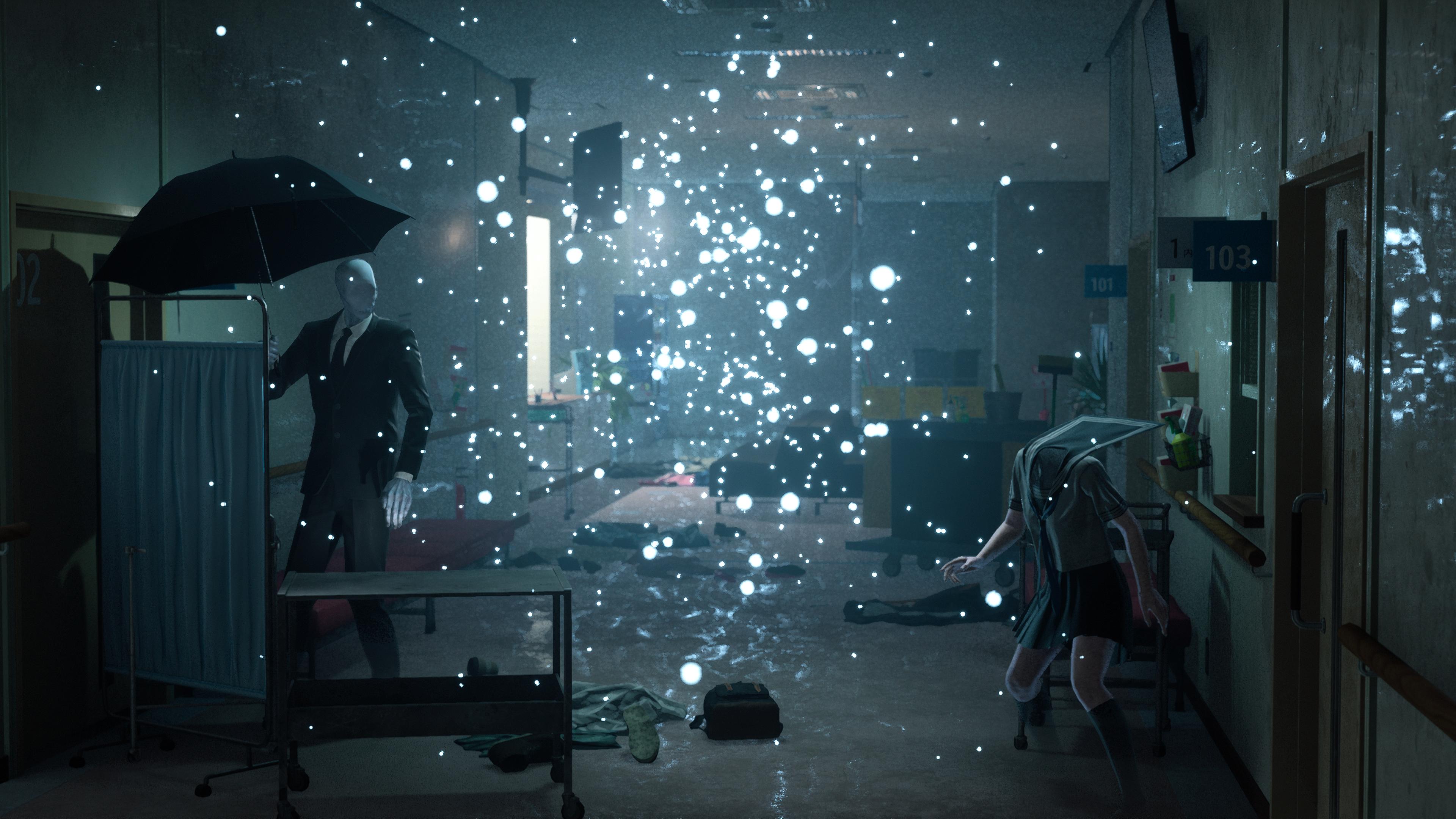
These abilities are brought together by the hand movements that originate from a Taoist practice called Kuji-in. Kuji-kiri is what Akito uses in battle, specifically referring to making cuts in the air as a method of protection against unwelcome influences. These movements look fantastic in-game, and even when swiftly switching from one element to another, the natural transition between different gestures adds a great deal of excitement to every struggle. Talismans are also introduced a bit further along, allowing players to toss these objects imbued with power towards yōkai to stun them or obscure their sight.
Tango Gameworks did a great job ensuring that the method in which the player ward off yōkai is deeply linked to the themes of its world. This connection not only makes the experience more convincing, but it ensures the game’s combat feels unlike any other.
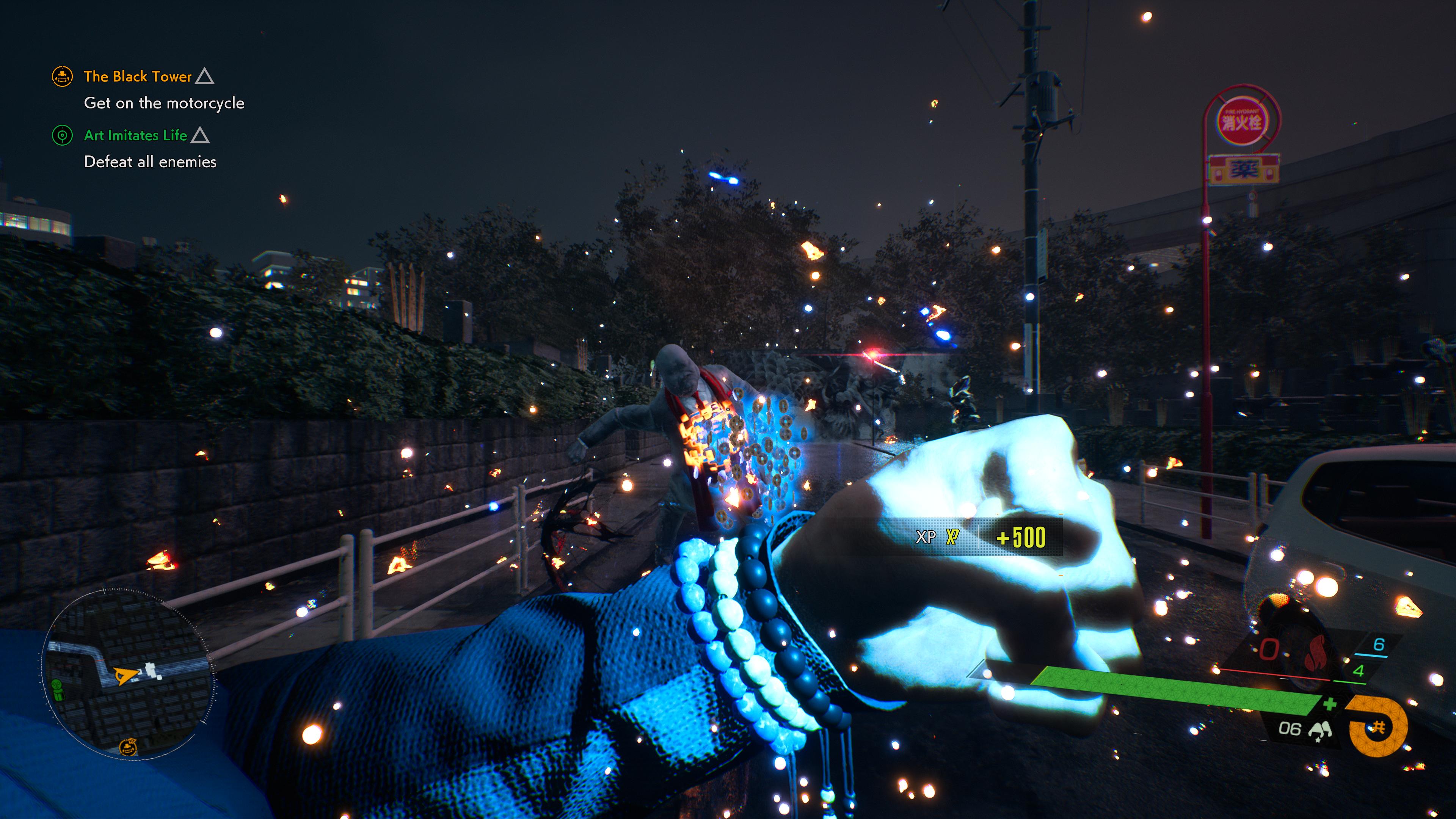
However, there could have been additional elemental powers as the game progresses. Players have access to fire, wind and water, but they only boast two attacks each. Ghostwire: Tokyo shows its hand rather early, as these are offered within the first two chapters. After that, you’re using the same abilities (just slightly upgraded through the skill points systems) throughout the rest of the game.
Yōkai exhilaration
Ghostwire: Tokyo elevates the intensity when you’re rushing up a flight of stairs and turn the corner only to see an unexplainable, faceless thing with crimson skin wielding a flaming hammer. It’s jarring to see these creatures roaming around a modern setting like Tokyo, as the mix of supernatural and reality adds further strangeness to the aesthetic.
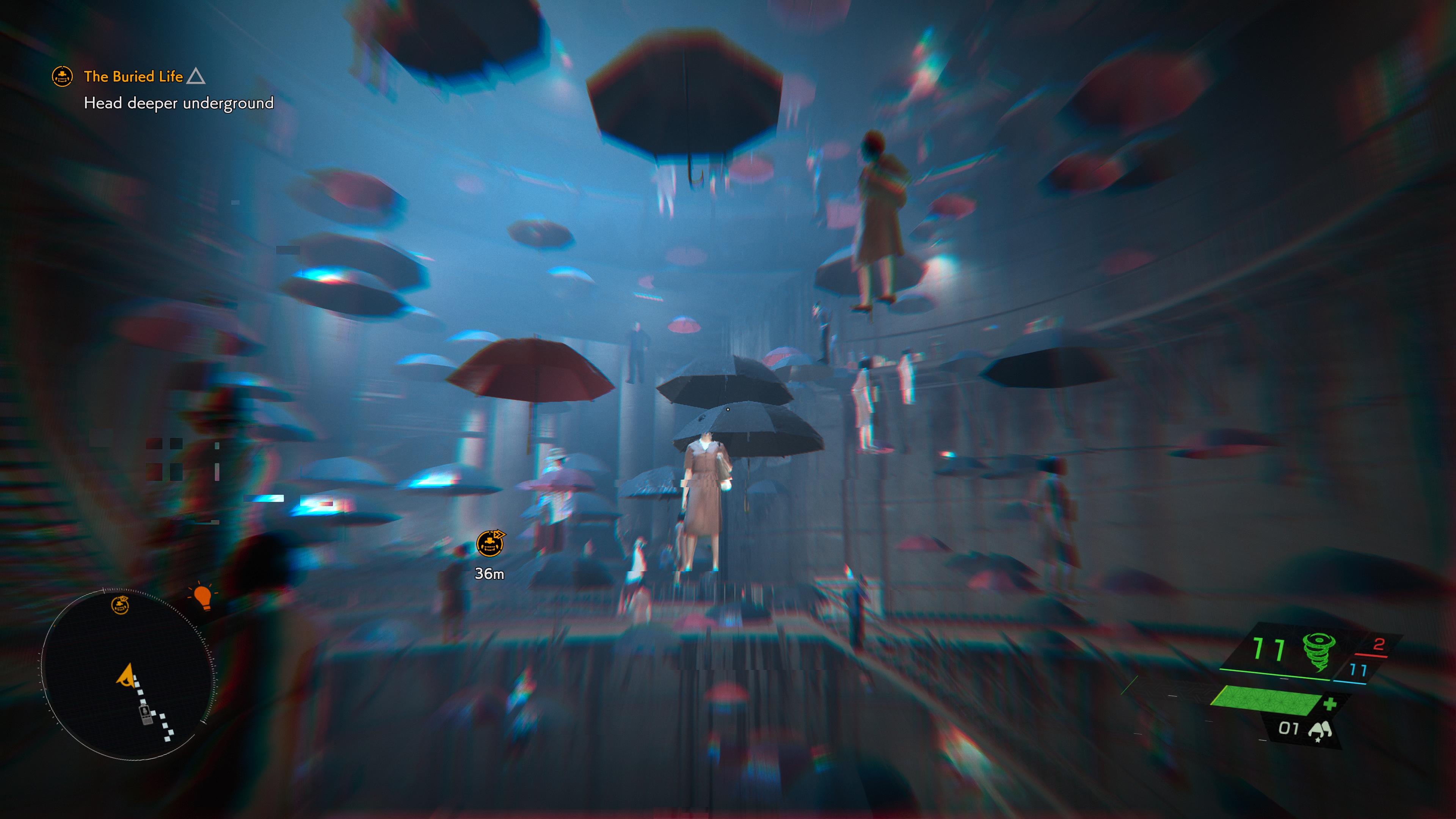
The introduction of each novel enemy will stagger you, as their monstrous designs and unfamiliar attack patterns feel fresh. A lot of them share a humanoid base model, but there are mechanical shifts between the dozen-or-so versions of these foes that change the tide of battle. And when surrounded by five or six enemies at once, these exchanges get hectic.
Ghostwire: Tokyo is at its most fun when it’s challenging, throwing waves of yōkai in the field and forcing you to utilize every last elemental power, arrow and talisman left in Akito’s inventory. It’s incredibly satisfying when using the block at the right time, as pressing it briefly before an enemy attack results in a perfect parry. Yōkai aren’t afraid to launch a slew of projectiles towards the player at once, and you will feel like a badass if you can parry every single one of them. This tight balance between defense and offense is what makes these engagements so exciting, especially on a harder difficulty where the consequences are more dire.
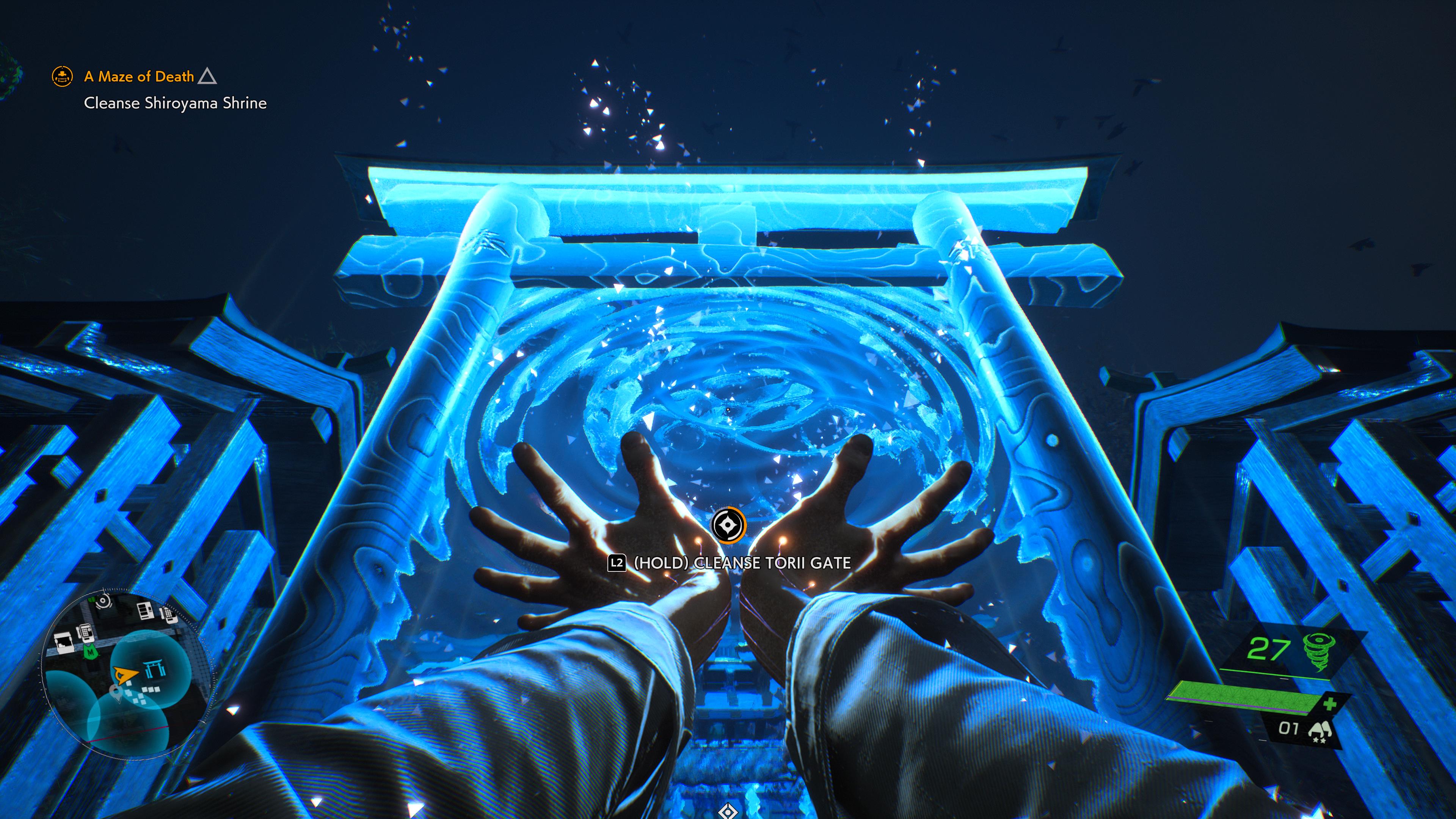
Players can also stealth through encounters, utilizing talismans or prayer beads to make them harder to spot. This option becomes more appealing as the player is introduced to yōkai they'll want to avoid; instantly destroying them through a stealth takedown can lighten the load of a battle. A few enemy types will force the player to use everything in their arsenal if tackled in combat, so any alternatives will save your life.
Unimaginative progression
Progression through Ghostwire: Tokyo is detached from its stylish presentation. Gaining skill-points and experience for protecting lost souls feels thematically irrelevant to making Kuji-kiri gestures and warding off demonic influences. Interacting with phone booths allows players to deliver the spirits they’re carrying to a safer place, awarding a certain amount of experience and currency to unlock new abilities or buy special items. While this is a fine excuse to get cool stuff in the player’s hands, it’s never exciting. Tango Gameworks’ explores how Kuji-in and the setting of Tokyo can offer a presentation unlike any other game; this calls for a progression system similarly embedded within these distinct ideas.
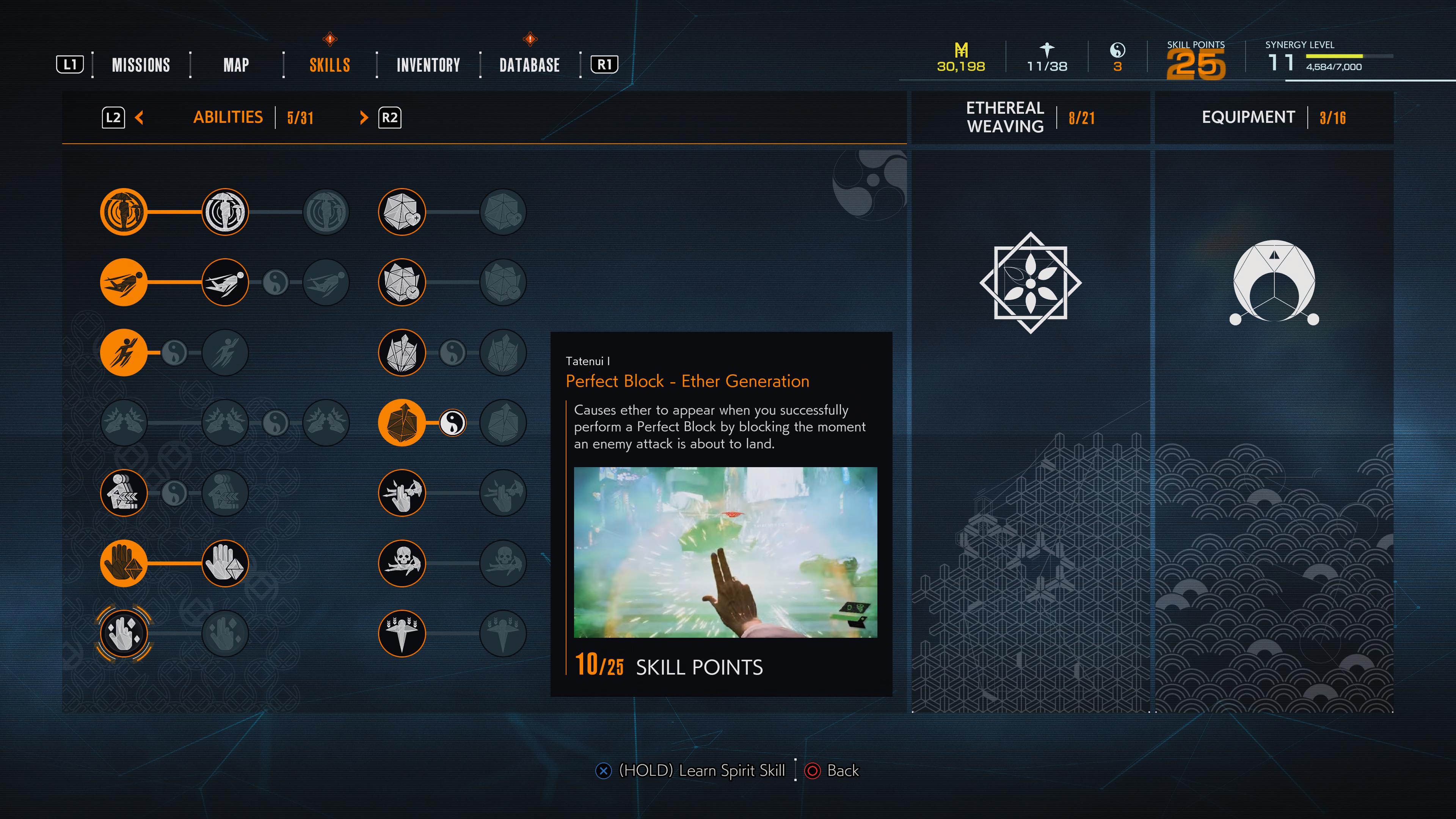
Leveling up and gaining 10 skill points is not exciting. I often put this part of the game off and just continue running around Tokyo, exploring the potential of its verticality or getting into bouts against yōkai. Gaining new abilities could have been intrinsically linked with exploration of the game’s world by offering new skills or powers through side-quests or the discovery of secrets. It’s difficult to see why this game needed skill trees and an experience system, beyond fulfilling an open-world tradition. KK even makes references that players should upgrade their skills whenever they level up, which adds onto the forced nature of this exchange.
On the other hand, Magatama is required to access certain skills, forcing players to engage with non-hostile yōkai. Some examples include luring in Kappa with a cucumber, searching through a house to find a hidden door leading to a scared Zashiki-warishi, or protecting a Kodama hiding in a tree as yōkai try to harm it. While these can get repetitive when overused, allowing players to interact with yōkai in ways that don’t involve combat is great.
Visions of Tokyo
Ghostwire: Tokyo's excellent vision of Shibuya is a considerable force behind the excitement of exploring its world. It’s lovely to feel involved in this city, whether it be taking a fortune at a Japanese shrine, browsing a convenience store for its most interesting snacks, or casually strolling through city streets to absorb its iconic neon-glow.
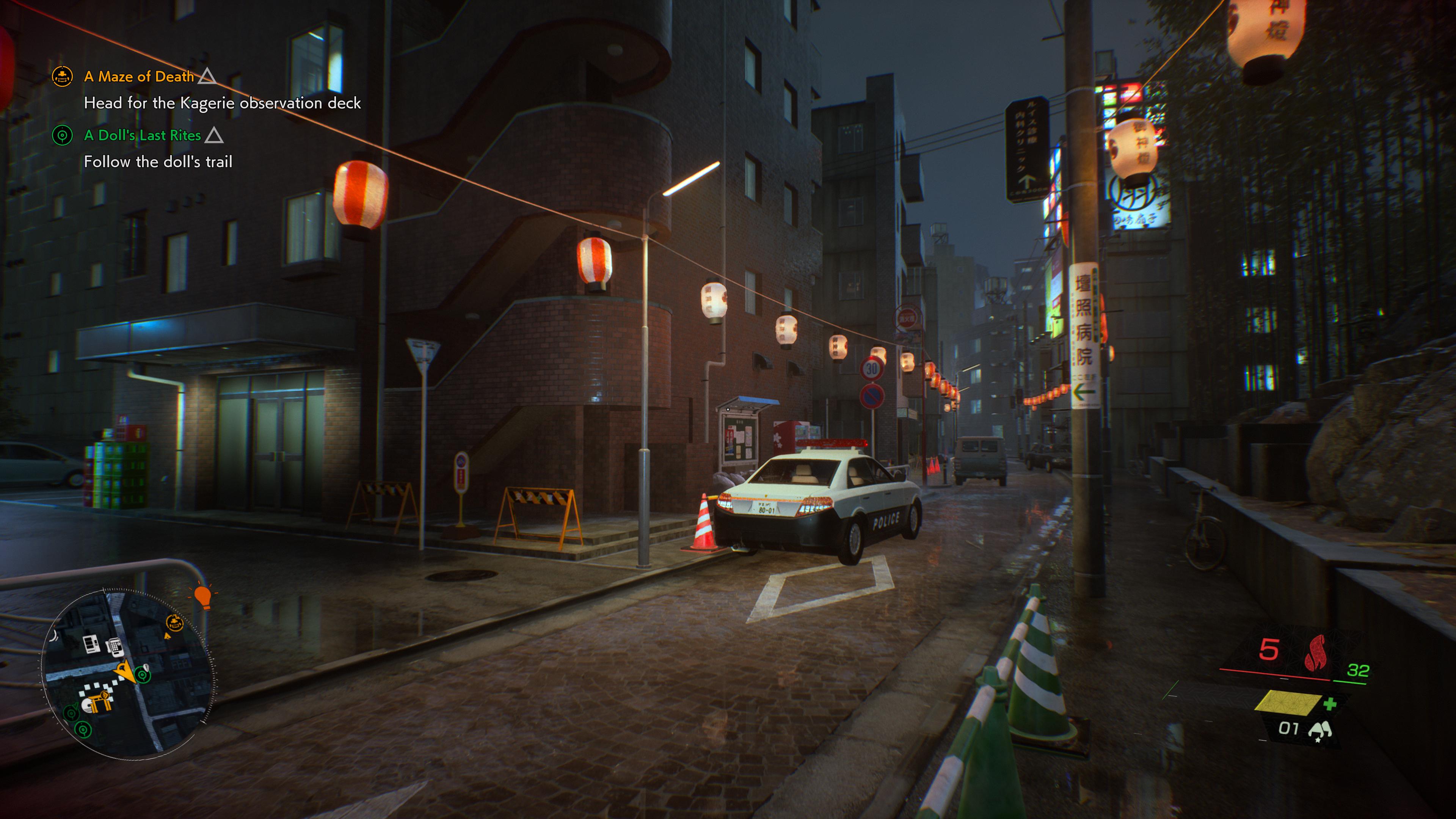
The placement of abandoned vehicles, litter, cones, piles of clothing, signs, trees, little lanterns strewn between buildings, bicycles, and best of all, pettable dogs, offer an impressive attention to detail that ensures no street corner feels empty. And many buildings are externally varied with their design and advertisements, with some even blasting music as you pass by them.
The game’s elevated sense of reality meshes wonderfully with the realistic portrait of Tokyo’s dim-lit streets. Players will realize what they see might not actually be there, as certain quests shift the physics of the game by having space expand and rooms turn. Yet even when exploring the limits of tangibility, there aren't many aspects of Shibuya that are ethereal or detached from reality.
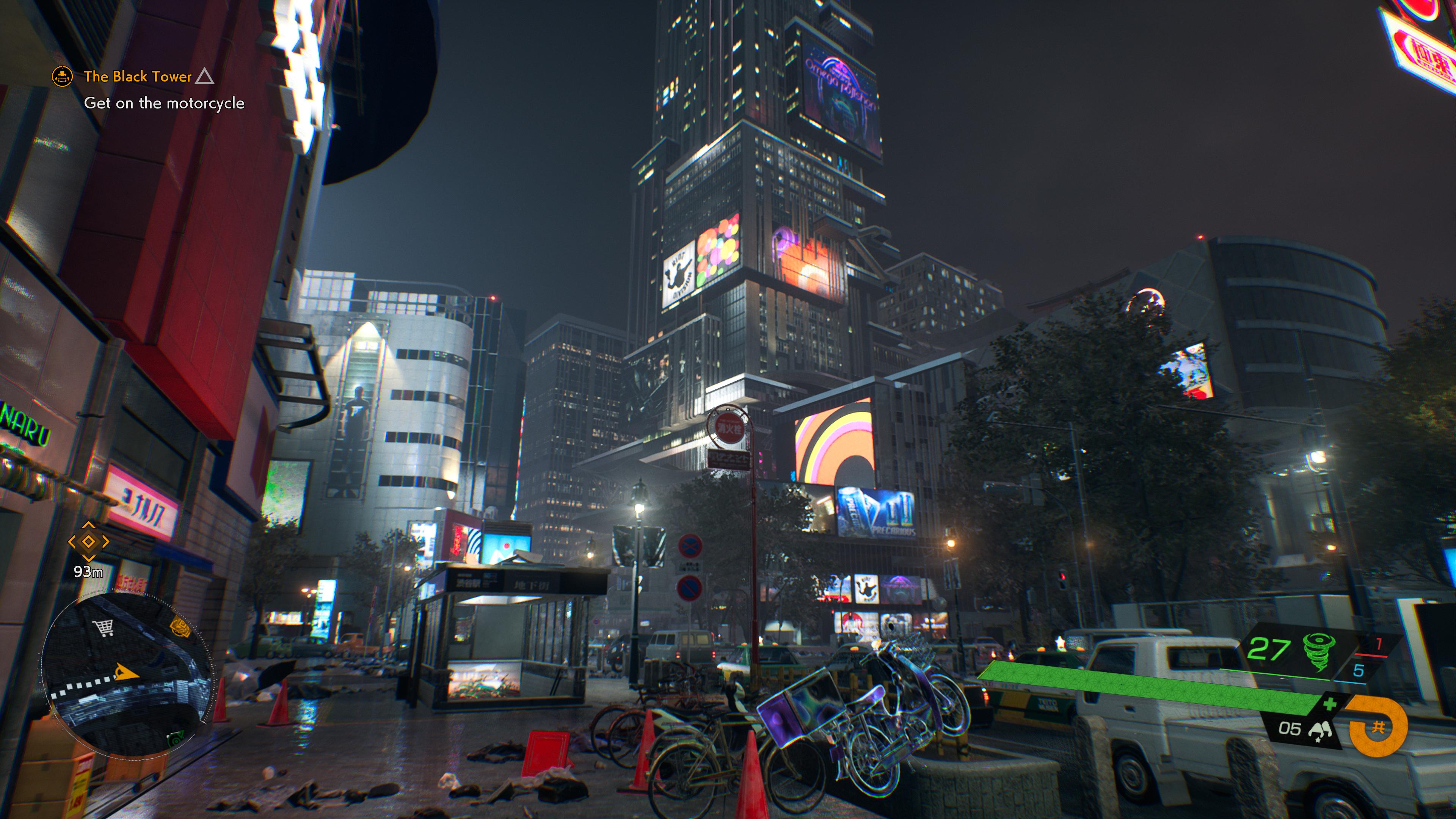
Accompanied by the ever-present crimson moon hanging above players heads at all times, Ghostwire: Tokyo gives us a great excuse to run around this gorgeous corner of Japan. Hopping across rooftops and taking in the symphony of neon screens, billboards, and tightly packed city streets that encompass Shibuya is what makes this game stand apart from others in the genre.
Creative interactivity
Tango Gameworks’ attention to detail carries over in how the player interacts with the world. If you want a buff, you go to a shrine or temple and take an Omikuji, which is a fortune written on a strip of paper. To upgrade your maximum elemental capacity, you pray at Jizo statues hidden throughout the city. When entering a local convenience store, players interact with a floating yōkai cat who sells snacks and talismans.
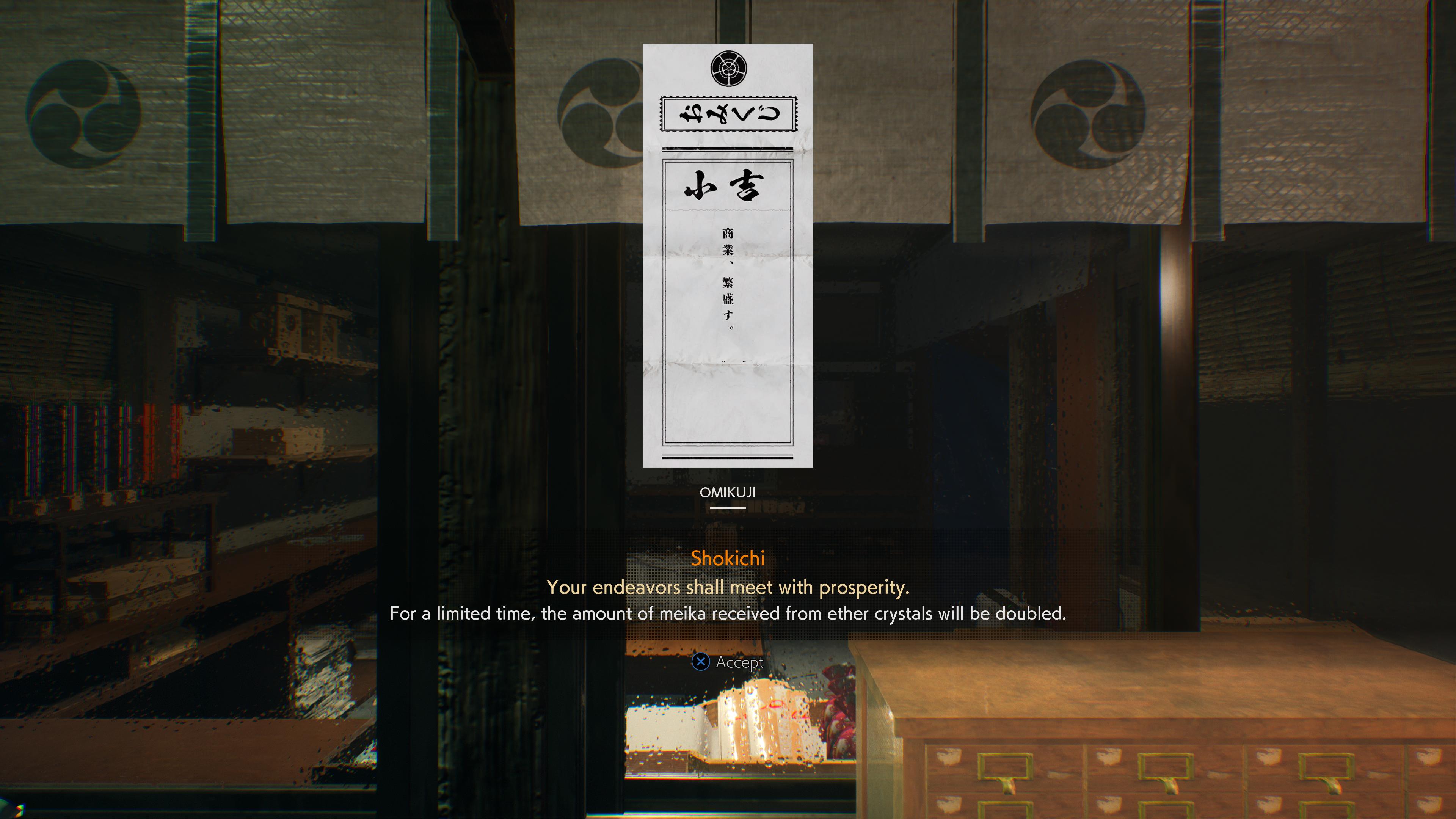
To unlock new parts of the map, you must cleanse a torii gate and push away the fog, also awarding you with a Prayer Bead that offers unique buffs like increased elemental damage or stealth. And if players are having trouble finding something like a Jizo statue, they can donate 100 or 500 Meika (the game’s currency) at a Saisen (offering box). You can even feed stray dogs, and if an object of interest is nearby, they’ll take you right to it.
The end result of these elements is what you expect from an open-world game, but how the player gets there is unique and appropriately attached to the setting. These are things you could only do within this world, giving it a distinct identity.
Exploration could be more exciting
Shibuya is overwhelmed by a mysterious fog that has caused every civilian to vanish. Players need to cleanse torii gateways to rid the city of this mist, and until they do, stepping into the fog will offer a swift death. Limiting exploration to story-progression hinders players’ agency, forcing us to explore a certain subset of blocks at a time.
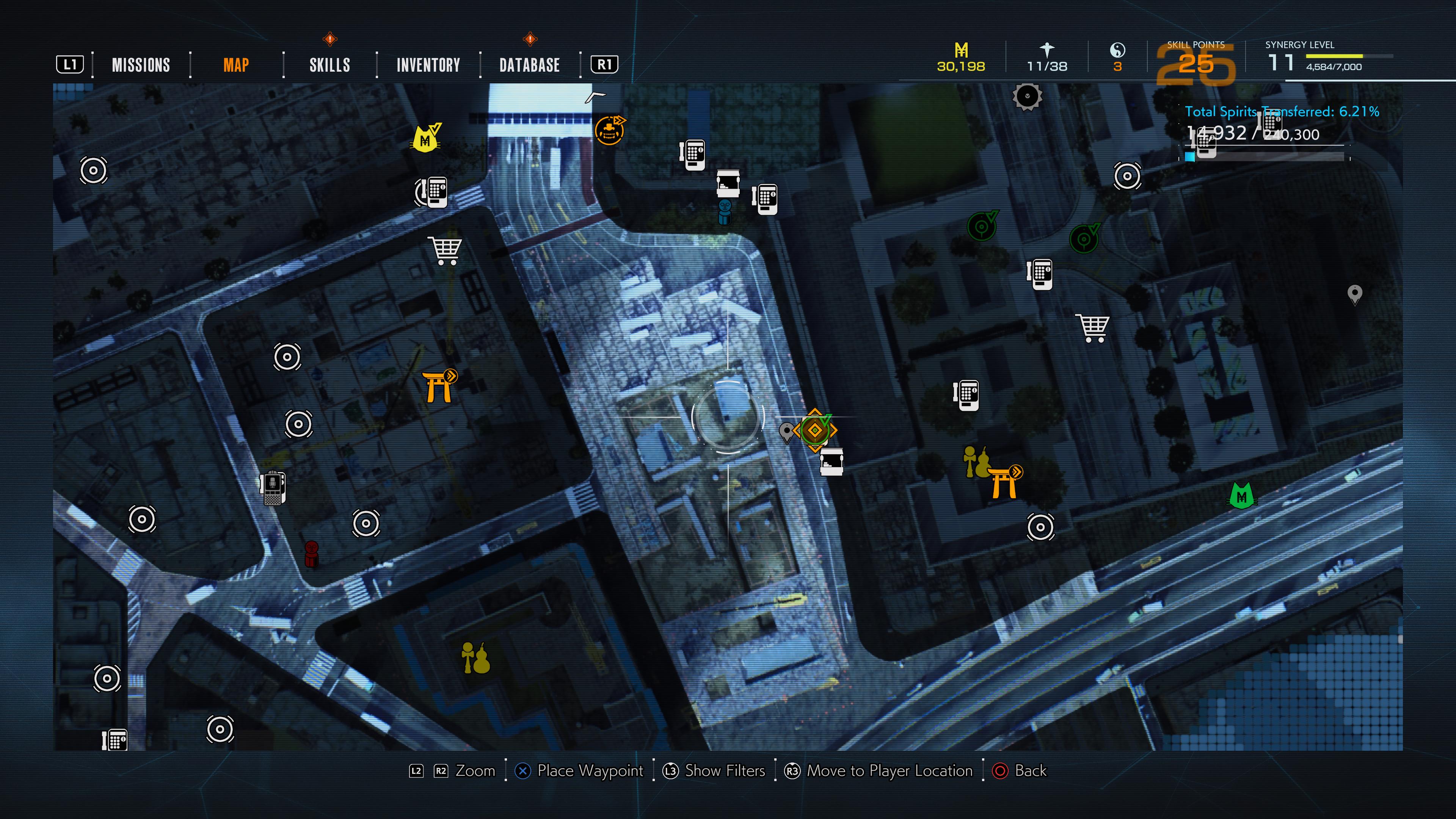
I’ve accidentally stepped into this fog while getting lost in the world, and suddenly, the game is aggressively nudging me to go elsewhere. Open-worlds are most effective when they’re truly open, and although Ghostwire: Tokyo is gorgeous, it’s frustrating when I can’t interact with a point of interest in my sight. This continues to be a problem up until the finale, which is why I’m glad I didn’t start doing side-quests until after I beat the game.
On the other hand, it’s nice that players can freely explore the verticality of Tokyo, whether it be by grappling onto a tengu, escalating a fire escape, or hopping off of a rooftop and gliding to another. And when players acquire an ability that allows them to grapple onto whatever rooftop they see, this freedom is even more satisfying.
Open-world complaints
Ghostwire Tokyo’s entertaining open-world is hampered by its predictability. Cleansing torii gates removes the fog from an area, revealing collectible items and side-quests around that part of the map. Interacting with these elements is enjoyable thanks to the game’s tight combat and fantastic aesthetic, but going from one guided point of interest to another offers little excitement. You’ll be spending a lot of time collecting loose spirits before depositing them into a phone booth, or mindlessly following the green side-quest marker forced onto the screen.
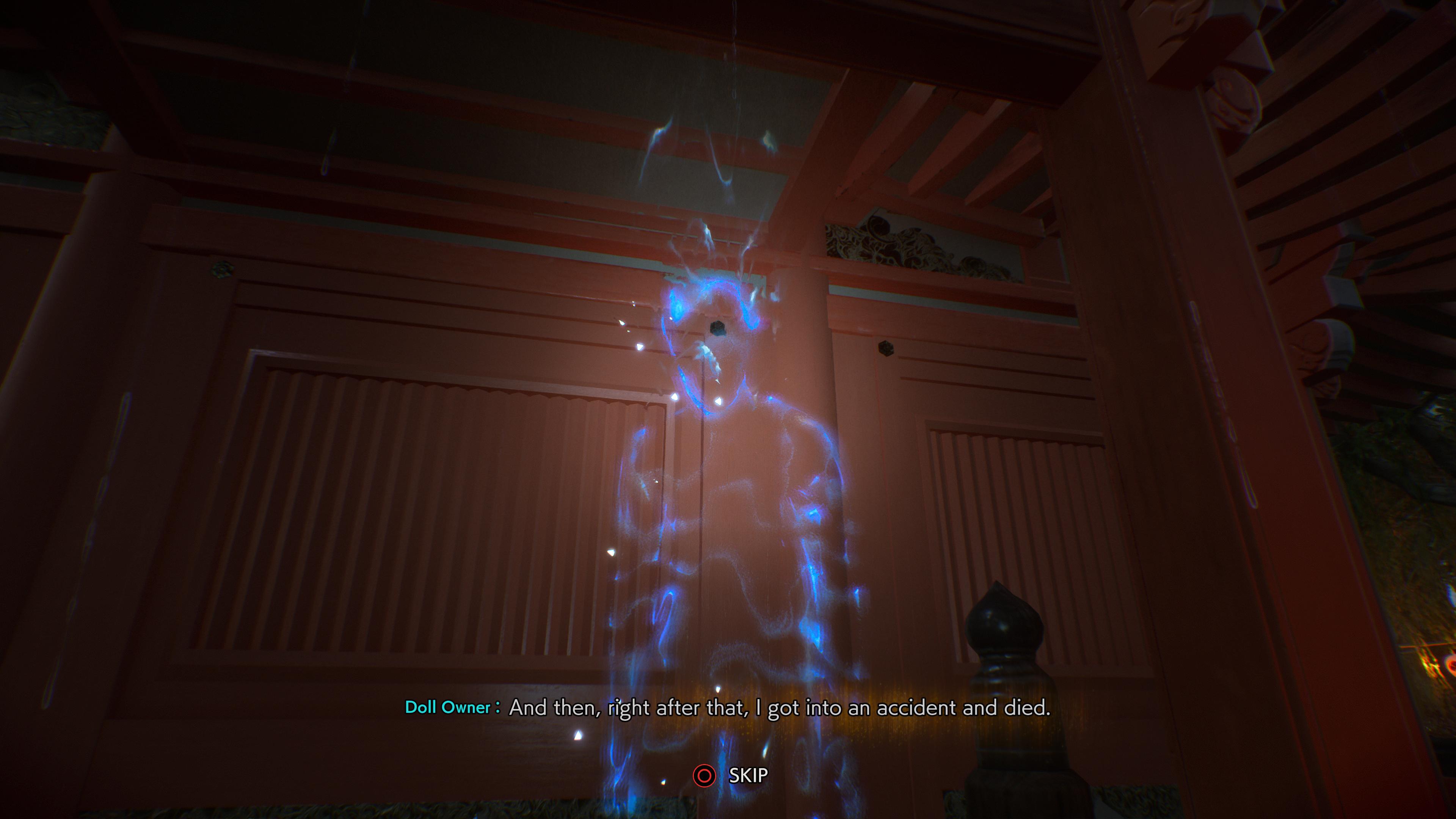
Most side-quests the player engages with lack inspiration, whether it involve fighting off waves of enemies in a small arena, fetching a single object marked on the map, chasing a flying collectible across rooftops, or following slow specters to familiar destinations. And there are too many side-quests (and boss fights) that take players to a circular arena in a shallow bed of water with random assets strewn about. This was cool the first time, but it is grossly overused.
The best parts are intertwined with the game’s personality, as certain elements allow us to explore buildings with reality-shifting properties and interact with new types of yōkai. During one quest, the player appears in an alternate realm where they chase a specter through an upside down city. Another one has you go back in time to a feudal lord's mansion to purge the area of its negative influences. These moments are still limited by a specific set of enemy types, but the ambition is exciting. I wish every side-quest in Ghostwire: Tokyo offered a similar level of memorability.
Bottom Line
Shibuya is overwhelmed with aggressive yōkai, but Ghostwire: Tokyo is rarely scary. During the first few hours, I wasn’t too fond of how the game’s flashy presentation took away from the creepiness of its desolate streets and disturbing enemy designs. But these expectations obscure what Tango Gameworks is attempting to accomplish.
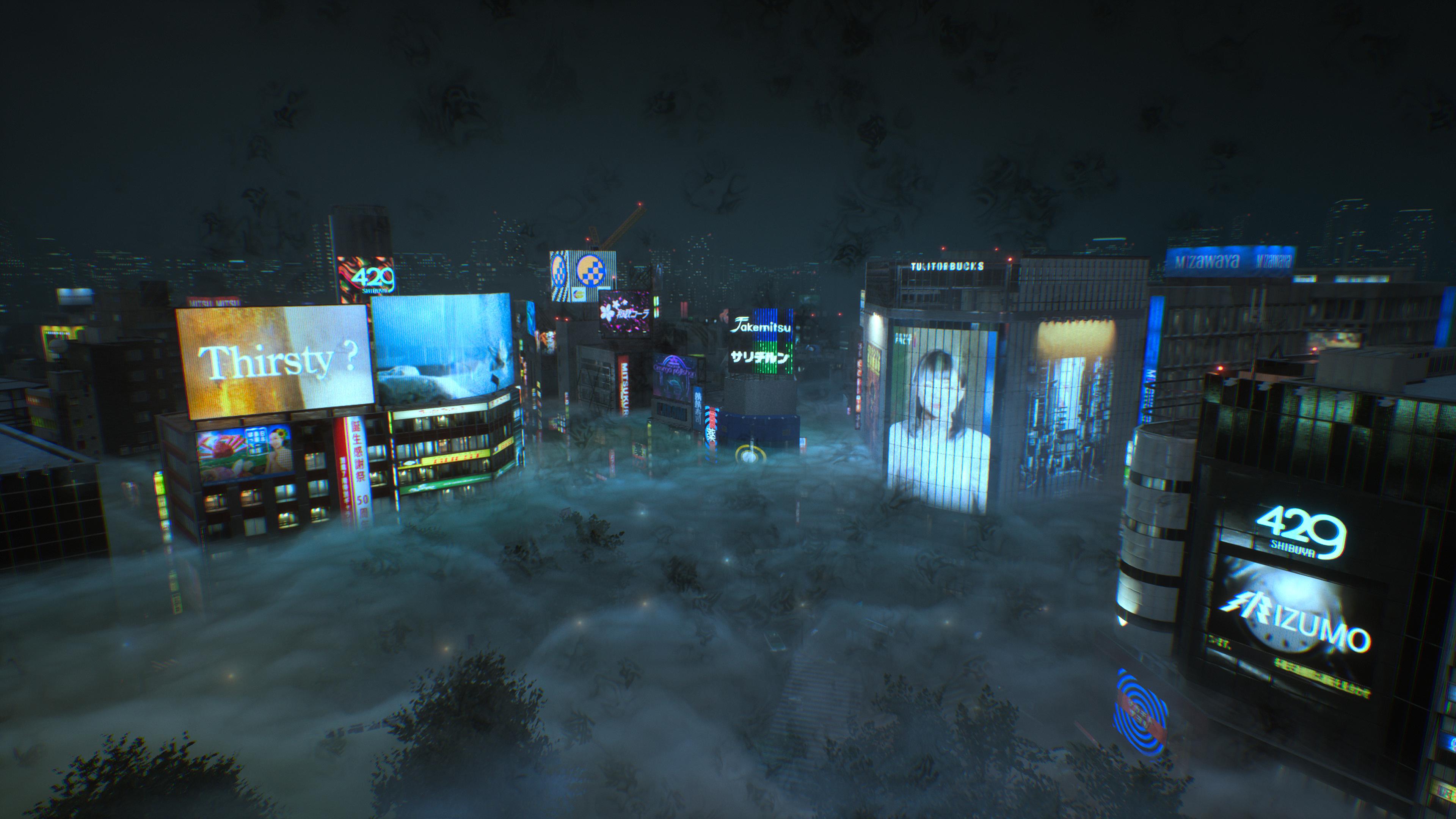
This disturbing setting is the basis for what is actually a traditional open-world experience. Although fear is almost never invoked, the bizarreness behind each monstrous yōkai and the trippy environmental effects make it clear how the game benefits from merging an action-packed foundation with backdrops rooted in horror. This isn't a survival game, and it won’t make you jump out of your seat. Instead, Ghostwire: Tokyo is a blast through Shibuya, with little sprinkles of terror placed throughout the journey.
This gorgeous vision for Tokyo possesses an exhilarating approach to psychedelic style, and If you can get over the many elements that make this open-world mechanically trite, Ghostwire: Tokyo presents a city worth getting lost in.

Self-described art critic and unabashedly pretentious, Claire finds joy in impassioned ramblings about her closeness to video games. She has a bachelor’s degree in Journalism & Media Studies from Brooklyn College and five years of experience in entertainment journalism. Claire is a stalwart defender of the importance found in subjectivity and spends most days overwhelmed with excitement for the past, present and future of gaming. When she isn't writing or playing Dark Souls, she can be found eating chicken fettuccine alfredo and watching anime.
